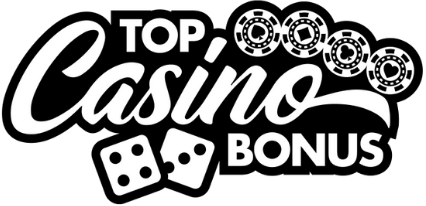How to manage a short stack in poker tournaments
There’s a peculiar tension in the air when your tournament stack barely scratches ten big blinds. That’s the short stack, the tightrope walk between survival and oblivion. Managing it isn’t a matter of hope or heroics. It’s discipline, timing, and having the guts to pull the trigger when it counts. Too many players talk themselves into playing scared, clinging to chips that will lose their value like yesterday’s newspaper. Let’s cut through the noise and get down to what actually works.
The mindset shift from survival to opportunity
Most rookies panic once their chip count dips below 20 big blinds. They either freeze up or try to double up blind. Neither’s right. A small stack shifts your weapon of choice from post-flop finesse to pre-flop aggression. You trade depth for leverage. Every move matters more, but you’re definitely not out of the running.
Don’t play not to lose, play to win
Here’s where folks go wrong: they tighten up, trying to ladder up the payouts. That might keep ’em alive for another orbit, but it rarely gets them to the final table. You’ve got to see your stack as a tool, not a liability. That means knowing when to shove, when to re-shove, and when to get the hell out of the way.
Stack size thresholds you need burned into memory
All short stacks aren’t built the same. A 15 big blind stack plays completely different from a 7 big blind one. Understanding the thresholds changes how you approach every hand.
Between 20–15 big blinds: the re-raise shove zone
With this stack, you’ve got enough chips to scare off marginal opens. You can 3-bet shove over loose opens from late position. This is where fold equity still exists, and that’s your biggest weapon. Do it too early though, and you’ll lose value. Too late, and you’ve lost your spine.
From 14–8 big blinds: the jam or fold territory
This is where hesitation kills. No limping, no calling raises, no fancy footwork. Your entire hand range decision is binary, raise all-in or fold. Pick your spots carefully based on your position, the players still to act, and who’s left with wide opening ranges.
Below 8 big blinds: the true desperation zone
If you find yourself in this boat, brace up, now it’s all about doubling or dying. Any decent hand becomes a shove, especially on the button or cutoff. Don’t wait for premiums. Waiting for aces here is like waiting for a bus that’s already missed its last stop.
Leveraging table dynamics and position
Position is everything when your stack’s skinny, and players forget that all too often. A suited connector in late position beats A9 offsuit under the gun every time when pushing your last few chips. Play tighter in early position and wider in the blinds. And if it folds to you in the small blind, that’s your cue to hammer almost any two cards if the big blind’s tight or short.
Spot the weak links
I’ve won critical pots shoving into opponents who’d just had the wind knocked out of them. Players who’ve just doubled someone up, or lost a coin flip, tend to tighten up, use that. Watch how quickly people fold hands they’d normally play after a bad beat. That hesitation is your green light.
Understanding fold equity and maximizing it
Fold equity, it’s the hidden currency of short stack play. It means how often your opponents will lay down hands when you go all-in. That’s why timing is everything. Don’t blow fold equity by shoving into big stacks who love calling light. Target middle stacks who want to make the money without risk.
This becomes particularly vital when you’re playing the bubble. That’s when fold equity skyrockets because players tighten up to avoid busting. Know that, and you can steal blinds without cards, just guts and good timing.
Classic mistake: waiting for premium hands
You’re not buying time here. You’re buying pots. Sitting around waiting for monster hands will bleed you dry through blinds and antes. When your stack is tiny, K-8 suited on the button is solid gold. Queen-ten offsuit in cutoff? Good enough. Get it in while you’ve still got some bite.
Case study: the queen-nine shove
We were four off the money. I had eight big blinds in the big blind. Folds to the button who’s got twice my chips. He min-raises. This guy had been stealing all night. I looked down at Q9 offsuit. Not the hand you write home about, but it’s good enough. I shoved. He tanked, folded. Blinds and antes pushed me up to ten bigs. That’s survival with intent.
Choosing the right platform for tournament play
The caliber of games and structure of tournaments vary drastically across platforms. If you’re serious about sharpening your short stack game, pick a room that offers deep player fields and consistent blind structures. Sites like Guts Casino maintain a reputation for competitive multi-table tournament formats with plenty of edge for sharp players.
Another platform worth exploring is Golden Nugget Casino, particularly for its Sunday bounty tournaments. These encourage aggressive play, which supports the kind of short stack shoving that stacks up chips fast when done right.
For a more traditional grind where timing and stack management are center stage, Genting Casino offers a nice rhythm of blind progressions and smaller fields. This is perfect for executing disciplined short stack adjustments without wild all-in fests every other hand.
If you’re looking for a more experimental environment, somewhere with steady overlays and softer fields, give Dunder Casino a go. Their MTT offerings may not tilt toward the high-stakes crowd, but that makes them a fertile training ground for risk/reward mechanics with smaller stacks.
The final word: aggression is security
Short stack play isn’t glamorous. You’re often one move from walking off the stage. But when you understand how to weaponize your chips, using fold equity, timing, and position, it becomes a dance. Controlled, calculated aggression is your life vest. Just don’t let fear paralyze your instincts. The chips were meant to be used, not admired.
One thing no HUD or solver can teach, heart. That extra inch of guts to make the right jam with ten high from the small blind. If it’s the right move, you make it. Otherwise, you’re not playing poker, you’re just waiting to lose.





0 Comments